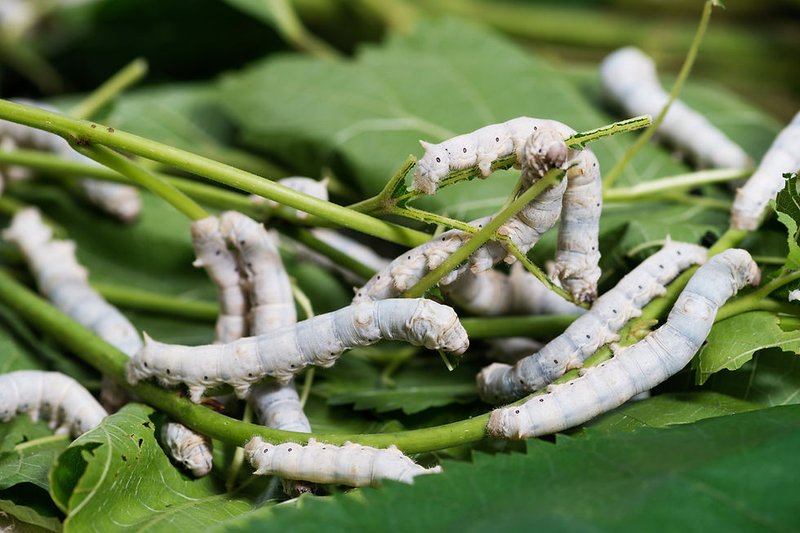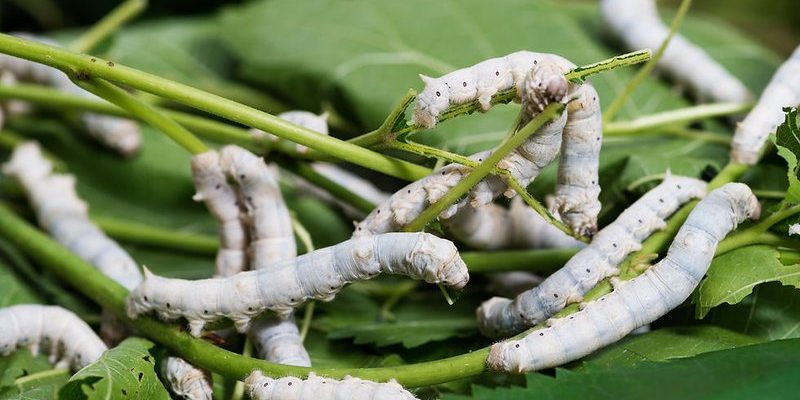
Picture this: each silkworm breed has its own unique traits that determine how much silk it produces. Think of it as a family of artists, each with their own style. Some produce breathtaking amounts, while others might be more modest in their output. So, let’s take a stroll through the world of silkworms, exploring what makes each breed special and how their silk yield differs.
What is Silk Yield?
Silk yield refers to the amount of silk fibers produced by a silkworm during its life cycle. But what does that really mean? Imagine a factory where each silkworm is a worker, spinning its own silk cocoon. The yield is like measuring how much product each worker can produce before their shift ends. Various factors, including breed, environment, and care, impact this yield.
You might be wondering why silk yield is crucial. Well, higher yields can lead to more efficient production for silk farmers. When they can produce more silk with less effort, it not only boosts profits but also ensures a steady supply of this luxury resource.
Different Silkworm Breeds and Their Yields
There are several **silkworm breeds**, and each has its own unique characteristics. Let’s break down a few of the most notable ones and how they stack up in terms of silk yield.
Bombyx mori: The Star of Silk Production
The Bombyx mori, or the *domesticated silkworm*, is like the superstar of the silkworm world. This breed is responsible for the majority of silk production globally. They can yield anywhere from **900 to 1,200 mg** of silk per cocoon. That’s a hefty amount!
The females of this species are typically larger and produce more silk than males. This breed thrives in controlled environments, making it easier to manage and cultivate. Farmers often prefer this breed due to its high yield and quality silk.
Bombyx mandarina: A Wild Player
Next up, we have the **Bombyx mandarina**, a wild silkworm breed. While it might not produce silk in the same quantities as its domesticated cousin, it still plays an essential role. Yielding about **400 to 600 mg** of silk, this breed is known for its resilience in varying environments.
Interestingly, the silk from Bombyx mandarina tends to have unique properties compared to domesticated silk, which could be appealing for niche markets. Think of it as artisanal silk—crafted by nature rather than by human hands.
Factors Affecting Silk Yield
Silk yield isn’t solely determined by the breed; several factors also come into play. Let’s explore these elements to understand how they impact production.
Environmental Conditions
Just like plants need the right conditions to thrive, silkworms also require specific environmental factors. Temperature, humidity, and even air quality can influence silk production. Ideally, silkworms do best in warm, humid climates.
When conditions are optimal, they’re more likely to produce better quality silk in larger quantities. A stable environment means that these little workers can focus on what they do best: spinning silk!
Diet and Nutrition
The nutrition of silkworms is another crucial factor. Think of them as athletes; what they eat directly affects their performance. Silkworms primarily feed on mulberry leaves, which provide the essential nutrients they need to thrive.
If they don’t get high-quality food, their silk production can suffer. Farmers who prioritize the health and diet of their silkworms typically see better yields, much like how a well-fed athlete performs better.
Importance of Silk Yield for Farmers
Understanding silk yield isn’t just academic; it has real-world implications for silk farmers. Higher yields can directly impact profitability and sustainability.
Economic Benefits
For farmers, silk is more than just a product; it’s a livelihood. The more silk they can produce, the more they can sell, which is crucial in a competitive market. Increased silk yield means a greater return on investment.
Farmers often select breeds based on yield potential to maximize their income. This choice impacts not only their profitability but also the quality of silk that reaches consumers.
Sustainable Practices
With the growing emphasis on sustainability, understanding silk yield can help farmers adopt better practices. By selecting the right breeds and optimizing growing conditions, they can reduce environmental impact while increasing yield, creating a win-win for their livelihoods and the planet.
Challenges in Silk Production
While silk production can be rewarding, it’s not without its challenges. Here are a couple of issues farmers might face.
Diseases and Pests
Just like any farming venture, silkworm farming can be susceptible to diseases and pests. An outbreak can severely impact silk yield. Farmers need to be vigilant and sometimes use preventive measures, such as proper sanitation and crop rotation.
Market Fluctuations
The silk market can experience fluctuations, affecting prices and demand. When supply exceeds demand, prices drop, making it difficult for farmers to maintain profit margins. Understanding trends can help farmers adapt and make informed decisions about which breeds to cultivate.
Silk yield per silkworm breed isn’t just a number; it’s a vital aspect of the silk industry. As we’ve explored, factors like breed, environment, and nutrition all play a crucial role in determining how much silk these fascinating creatures can produce.
By supporting sustainable practices and being aware of the challenges ahead, silk farmers can continue to thrive in a competitive market. Understanding the intricacies of silk production is essential not just for farmers but for consumers who value high-quality silk. So, the next time you feel that luxurious fabric, remember the journey it took from the silkworm to your wardrobe!

